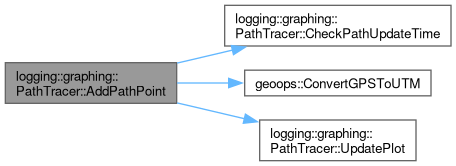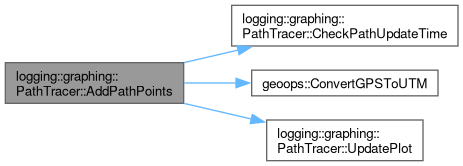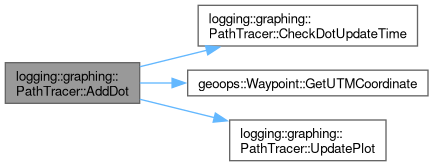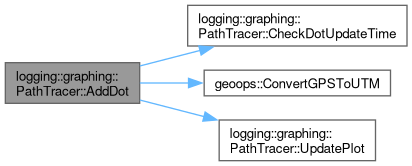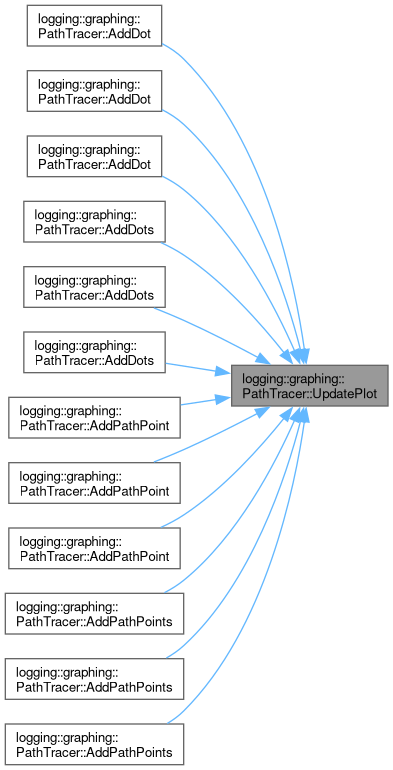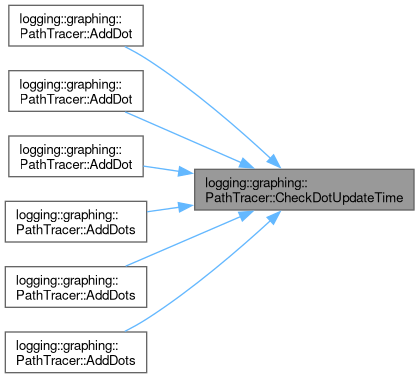Update the plot with the new waypoints and redraw the plot.
711 {
712
713 std::vector<std::string> vLayerNames;
714
715
716 m_mtRoverPathAxes->clear();
717
718
719
720
721
722 for (const std::pair<const std::string, const std::string>& stdLayer : m_umPathLineStyleMap)
723 {
724
725 if (m_umPathMap[stdLayer.first].size() > 1)
726 {
727
728 vLayerNames.push_back(stdLayer.first);
729
730
731 std::vector<double> vEasting, vNorthing;
732 for (const std::pair<double, double>& stCoordinate : m_umPathMap[stdLayer.first])
733 {
734 vEasting.push_back(stCoordinate.first);
735 vNorthing.push_back(stCoordinate.second);
736 }
737
738
739 m_mtRoverPathAxes->plot(vEasting, vNorthing, std::string_view(stdLayer.second));
740
741 m_mtRoverPathAxes->hold(true);
742 }
743 }
744
745
746
747
748
749 for (const std::pair<const std::string, const std::pair<std::string, bool>>& stdLayer : m_umDotLineStyleMap)
750 {
751
752 if (m_umDotMap[stdLayer.first].size() > 0)
753 {
754
755 vLayerNames.push_back(stdLayer.first);
756
757
758 std::vector<double> vEasting, vNorthing, vRadius;
759 for (const std::tuple<double, double, double>& stCoordinate : m_umDotMap[stdLayer.first])
760 {
761 vEasting.push_back(std::get<0>(stCoordinate));
762 vNorthing.push_back(std::get<1>(stCoordinate));
763 vRadius.push_back(std::get<2>(stCoordinate));
764 }
765
766
767 matplot::line_handle mtLineHandle = m_mtRoverPathAxes->scatter(vEasting, vNorthing, vRadius);
768 mtLineHandle->color(stdLayer.second.first);
769 mtLineHandle->marker_face(stdLayer.second.second);
770
771 m_mtRoverPathAxes->hold(true);
772 }
773 }
774
775
776 m_mtRoverPathAxes->legend(vLayerNames);
777 matplot::legend_handle mtLegend = m_mtRoverPathAxes->legend();
778 mtLegend->font_size(8);
779 mtLegend->num_columns(2);
780
781 m_mtRoverPathAxes->grid(true);
782 m_mtRoverPathAxes->xtickangle(45);
783 m_mtRoverPathAxes->axis(matplot::square);
784 m_mtRoverPathAxes->xtickformat("%.0f");
785 m_mtRoverPathAxes->ytickformat("%.0f");
786
787 m_mtRoverPathAxes->hold(false);
788
789 m_mtRoverPathPlot->draw();
790 m_mtRoverPathPlot->save(m_szCurrentPlotSavePath);
791 }



